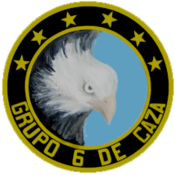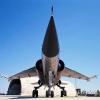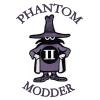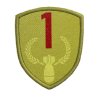Leaderboard
Popular Content
Showing most liked content on 05/07/2025 in Posts
-
4 points
-
3 pointsIn an era of shifting geopolitical dynamics, the United States sought to withdraw from it's role as the world's policeman and it's President saw the opportunity for the ultimate defence deal - leasing Nimitz-class aircraft carriers and selling the accompanying aircraft to certain friendly countries. The increase in US defence spending and a ramping up of Ford class carrier production ('the Admirals have a name picked out for the next carrier. It's a beautiful name, the best, but I can't tell you what it is') enabled the US to prematurely release some of the earlier Nimitz-class carriers from front-line duties, and while such a move would be unprecedented, it would serve both the US and the recipient nations' interests in maintaining regional stability whilst reducing America's spend on defending others, and offset the trade deficit between the US and countries it had accused of 'ripping them off' by selling more to America than America had sold to them. Japan was the first recipient. Previously constrained by constitutional limitations on offensive military capabilities, the country had gradually expanded its defense posture in response to growing threats from China and North Korea. Leasing a Nimitz-class carrier would significantly enhance Japan’s ability to project power and defend its territorial integrity, particularly around the East China Sea and Taiwan Strait, as well as to protect it's trade routes through the Persian Gulf and the Red Sea. For the U.S., leasing a carrier could strengthen the alliance, share the burden of maintaining maritime security, and enable a more distributed force posture without requiring permanent overseas American carrier basing. The carriers would retain the CVN-xx designation, and could be recalled to US Navy service if necessary, allowing the U.S. to retain strategic influence over the assets, although the recipient naton was allowed to choose to rename the vessel. Along with the lease of the carrier came the purchase of aircraft. JASDF F-15 units were re-equipped with various versions of the F/A-18 Superhornet, F-35A orders were switched to the navalised F-35C variant, and additional E-2 Hawkeyes were purchased, as crews from both the carrier and it's air wing were sent to the appropriate US Navy schools to learn new skills and US Navy personnel were seconded as advisers for at least the first deployment. By early 2027 CVN-70, formerly USS Carl Vinson, set off on it's first deployment as JS Akagi, a historic name chosen in honour of the earlier carrier that had been flagship of the 1st Air Fleet, the Kido Butai. That first cruise set the template for most future deployments, beginning with a 3 week shakedown in the Kuril Islands, including intercepts of snooping Russian Bears and other aircraft types, followed by a power projection transit through the South China Sea, including exercises with friendly nations' navies. Exiting via the Straits of Malacca into the Indian Ocean, further exercises were held with the Indian Navy while real-world ASW and air intercept sorties by the air wing kept prying Pakistani (and their Chinese allies') assets at arm's length, before Akagi took up station for around six months in the Arabian Sea. Forays into both the Straits of Hormuz and the Red Sea would feature in all cruises by the Akagi and it's battle group, and the air wing would fly many combat missions, hitting targets in the air, on land and at sea as needed. Relief on station would be by either a US carrier, or more frequently a former US carrier, and Akagi would return home, again making it's presence felt in the South China Sea, for rest and refit before the next deployment.
-
3 pointsIt's been a while... Longbow (because I haven't had time to install the Comanche yet)
-
3 pointsDoing some tests I often deal with F-103 intercepts. They're tough opponents but when I manage to reach their six it's impossible to let them go. It's a J-4/F-4 Fresco-A without afterburner, this F-103 really let me caught him up. To activate the F-103 periscope, in the data.ini file : [Fuselage] ... SystemName[xxx]=Periscope (replace xxx by next number in sequence) & [Periscope] SystemType=HIGHLIFT_DEVICE CLiftdc=0.0 CDdc=0.002 Cmdc=0.00 DeltaStallAlpha=0.0 AreaRatio=1.000 DeploymentMethod=AUTOMATIC_MACH Setting[1].Angle=8.62 Setting[1].DeployValue=0.85 Setting[1].RetractValue=0.86 MaxDeflection=8.62 MinDeflection=0.0 ControlRate=0.5 RotationAxis=X-AXIS ModelNodeName=PeriscopeCover ReverseModelOrientation=TRUE
-
2 points
-
2 points
-
2 pointsSitrep: Only one sea to city tiles still has to be done. That's how it looks at the moment: I was experimenting with TOD houses. It would be nice if i could put as many small houses as necessary on the map. But this would overload the game engine and only 500 per tile would appear in game. So i thought, that i could place only bigger houses, as shopping centers and skyscrapers. But skyscrapers should be visible from far distances and should not disappear from 10 km or so. So i think i will make the skyscrapers as normal target objects in a seperate target area. But for the inner city with the skyscrapers i still must create a new tile. It is still a long way.
-
2 points
-
2 points
-
2 pointsOur F-5 escort was right on time........ He missed, due to the closure speed...but only just so.
-
1 pointfrom the Seymour Johnson AFB airshow this yea r today i learned that CAP names their planes T-33 flying demo a few shots from the 4th FW firepower demo and the reason i still went even when everyone else in the family bowed out...... THE HOG!!! not the greatest shots, all taken from my phone camera. but i thought you guys might enjoy they got themselves a new title..........
-
1 pointasked it before, will ask it again why not multi house tod objects? i know the texturing would be a pain, but just keep the houses simple (youd be suprised how many American neighborhoods have cookie cutter houses) you have a 500 object limit, but could you have this instead of this
-
1 pointFAA F-16BM Block 10 (Argentine Air Force) v1.0 View File This is the First Argentine F-16BM, actually M-1210, Previously ET-210 The pack has two schematics: one that was actually presented here in Tandil, Buenos Aires, Argentina, and the other that was presented during the purchase confirmation, which remains fictional for now since the official schematic is unknown. The official schematics and data for avionics, radars, etc. will be created and published in future updates. General credits to Ravenclaw_007, Menrva and Team Viper - 3D Model Modified by Ravenclaw_007 - Weapons proporcioned by Ravenclaw_007 And 3 extra weapons created by Franconinja14 - New skins by franconinja14, using the Team Viper F-16C Templates and modified by Franconinja14. - Detailed Menrva F-22 pilot model - Detailed Team Viper ejection seat. - Sounds, Effects and fuel tanks proporcioned by Team Viper. Submitter franconinja14 Submitted 04/30/2025 Category F-16
-
1 point
-
1 pointUps, small problem. I forgot to save the last changes in the TOD file. So half of the newly planted trees disappeared. Shit happens. Tomorrow i will try it again.
-
1 pointhello, and welcome to CA a couple of etiquette tips: 1 dont include the pics in your quotes unless you are trying to highlight something very specific; 2 in screenshot threads, post a pic even when replying to someone elses post. mando screenie (or some other semi witty comment like i'd usually post above the pic) again, enjoy. have fun. show us what youre flying with!
-
1 point
-
1 pointAtlas Giraffe fighter aircraft program By 1984 SADF thought that Cheetah aircraft which was then under develpoment would not be ready to conduct operations on the ongoing border war. Atlas officials estimated that Cheetah will make its first flight sometime in 1985 with possible introduction to service date sometime in 1987 for the Cheetah E. The latter was regarded by many observers as an interim solution before Cheetah C become operational sometime in the early 90s. Cheetah E was actually a Mirage IIIEZ airframe conversion with some upgrades applied. It was fitted with a relatively simple avionics suite and radar but retained Atar 9C-3 engine. SADF decided that while avionics were good enough to counter FAPLA MiG-23s, lack of medium range air to air missile capability and engine performance were critical problems. With international embargo still active, South Africans decided to launch a parallel program code named "Giraffe". Giraffe's goal was to acquire/produce a small number of relatively modern fighters with BVR capability and newer engines at low cost within minimum time so that the first airframes enter service the same time with Cheetah. There was no budget nor time for development of a completely new aircraft so the Giraffe team inside Atlas took into account that SAAF was already very familiar with French aviation technology so they decided to apply upgrades to existing aircrafts. Atlas officials came up with the idea that the RDM radar (with ground mode removed) and the M53-5 engine of the early Mirage 2000C could be acquired and fitted to older Mirage IIICZs. Also Giraffe team gained some access to early stage of Rafale program. On January 1985 development team presented to government and SADF the characteristics of the upgraded prototype which would be ready to make its first flight as soon as possible. The aircraft should be able to accelerate fast, carry at least 2 medium range AAMs and 2 short range AAMs, detect/track fighter size targets at 50/25 nautical miles, use defensive countermeasures and finally eqquiped with an internal jammer. RDM and M53-5 would be delivered through third countries while the medium range Super 530F missile would be acquired in secret cooperation with France. Short range AAM would be the domestic V3C Darter. The first flight was estimated to take place sometime in September 1985. On May 1985 with the Cheetah on development stage and with the increase of military expenditures due to the ongoing conflict on Southern Angola, government prioritized Cheetah program as more important and terminated Giraffe. An artistic representation of how Giraffe could look like was published on Air International magazine (with little help from AI).
-
1 point
Important Information
By using this site, you agree to our Terms of Use, Privacy Policy, and We have placed cookies on your device to help make this website better. You can adjust your cookie settings, otherwise we'll assume you're okay to continue..









.thumb.png.ce2d54b9f08f0d7e1b3dbdf957d6e2c9.png)






